Art & Exhibitions
Painter Victoria Gitman’s Meticulously Depicted Handbags Lure Viewers in With Seductive Surfaces, and Then Turn a Cold Shoulder
The artist is now the subject of a 20-year retrospective in Los Angeles.
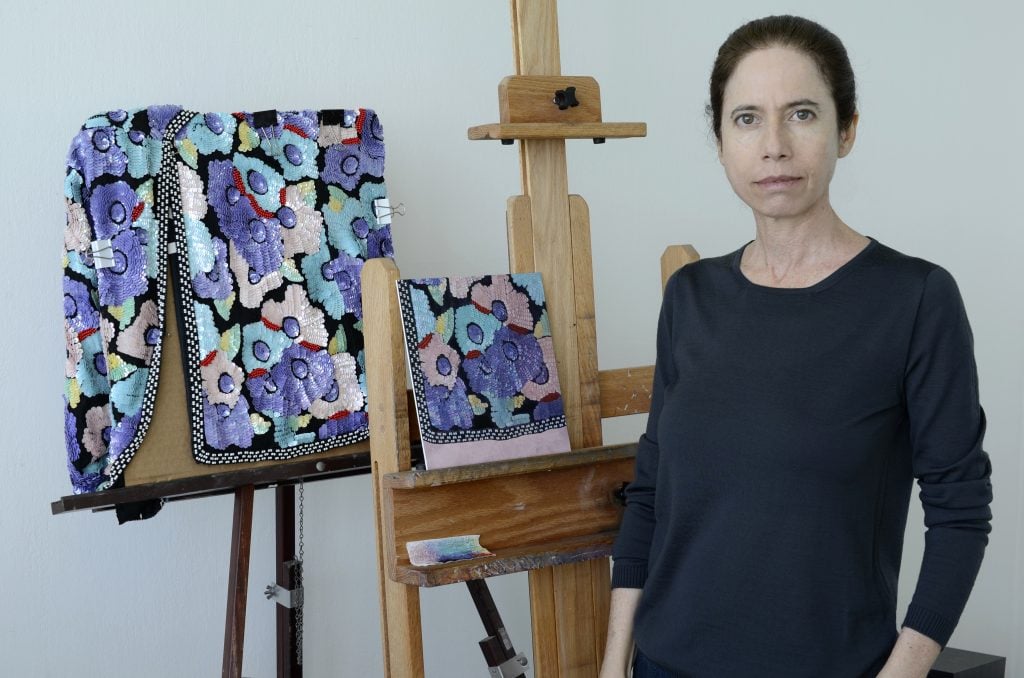
The artist is now the subject of a 20-year retrospective in Los Angeles.

Pac Pobric

In 2018, I wandered into Garth Greenan gallery in New York without the faintest idea of what was on show. From afar, I saw a group of eight small pictures, none much bigger than a postcard, all by a painter I did not know, Victoria Gitman. The closer I got, the more the paintings seemed to flicker like gems catching the light just right, luring me in with their effortless, irresistible charm.
Each work depicted, in close focus and finely articulated detail, a fur handbag in which Gitman saw a small abstraction in the making. An immediate list of artists came to mind as clear comparisons. Her tiny works had all the luxurious power of any large Sean Scully; all the closely observed detail of a Vija Celmins night-scape; and all the trembling, nervous energy of a Giorgio Morandi. It occurs to me now, years later, that the paintings are also enormously funny: Who could ever think to paint handbags in such detail but an artist with a clear, if muted, sense of humor?
Gitman, who was born in 1972 in Buenos Aires and now lives and works in Miami, is currently the subject of a 20-year retrospective at François Ghebaly gallery in Los Angeles, her second solo show with the gallery in L.A.
On the occasion of the exhibition, we spoke with the painter about how she chooses her subjects, where her art fits into the Modernist tradition, and how a productive sense of confusion infuses her work.
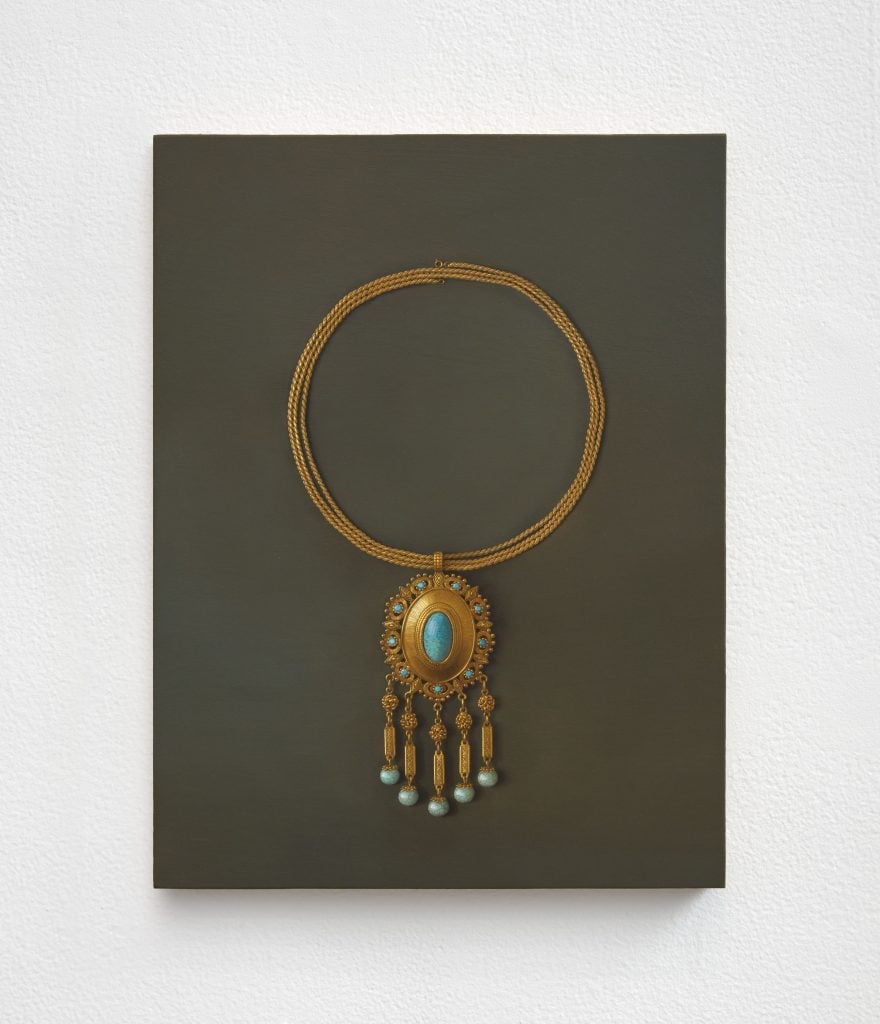
Among the earliest works in Victoria Gitman’s condensed retrospective at François Ghebaly is this 2002 picture from her “On Display” series. At this point in her career, Gitman was still painting objects in full against flat grounds. Photo: Paul Salveson, courtesy François Ghebaly.
You’ve now basically had two retrospectives in just seven years: a 14-year survey at the Pérez Art Museum Miami in 2015, and now a show looking at 20 years of work at François Ghebaly in Los Angeles. What has changed in the brief intervening period, and what has remained the same?
The biggest change is that, in the past five or six years, the objects in the paintings no longer rest on a flat ground, as they did in my work of the previous 15 years. The PAMM show was in one large room, and we had a wall with paintings of necklaces on flat grounds and another wall with fur purses, again leaning towards foregrounding. In the new works, I began to crop the images so that the fur surface fills the entire picture plane, from edge to edge. So compositionally, the new works are totally abstract. Interestingly, though, the cropping resulted not only in a more abstract image, but I think it also makes the furs more concrete as well. So it’s almost like the cropping brings the fur or the sequins closer to the surface, and that makes them all the more tangible.
Even though the cropped works were a big change, my work has been moving in this direction for years, so it seems like a very natural progression. I was thinking about abstraction from very early on. I was thinking, for example, of the round outline of a necklace as a Robert Mangold, and I was thinking about a series of white purses in terms of the history of the white monochrome in Modern art. When I finally made that jump towards filling the entire picture plane, that felt like a move that had been in the works for a while.
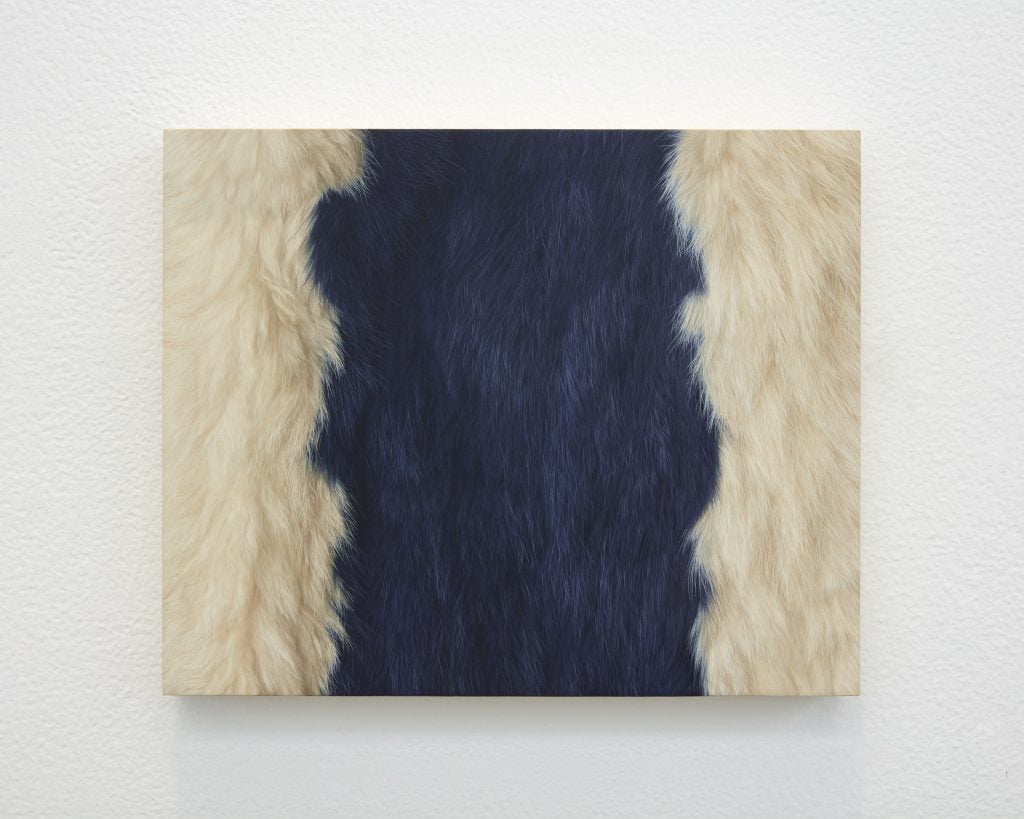
By 2017, when Victoria Gitman made this untitled work depicting a fur handbag, she was cropping her subjects so that small areas of purses filled out the entire picture plane. Photo: Paul Salveson, courtesy François Ghebaly.
It’s interesting that we’re having a very material conversation about what you do. Obviously, that’s extremely important to you.
Yeah. I’m interested not just in the surface of the objects the paintings represent, but also in the material surface of the painting itself. When people see my work in reproduction, it’s kind of misleading, because you only get the part about the work being very familiar. In person, the paintings do something very different.
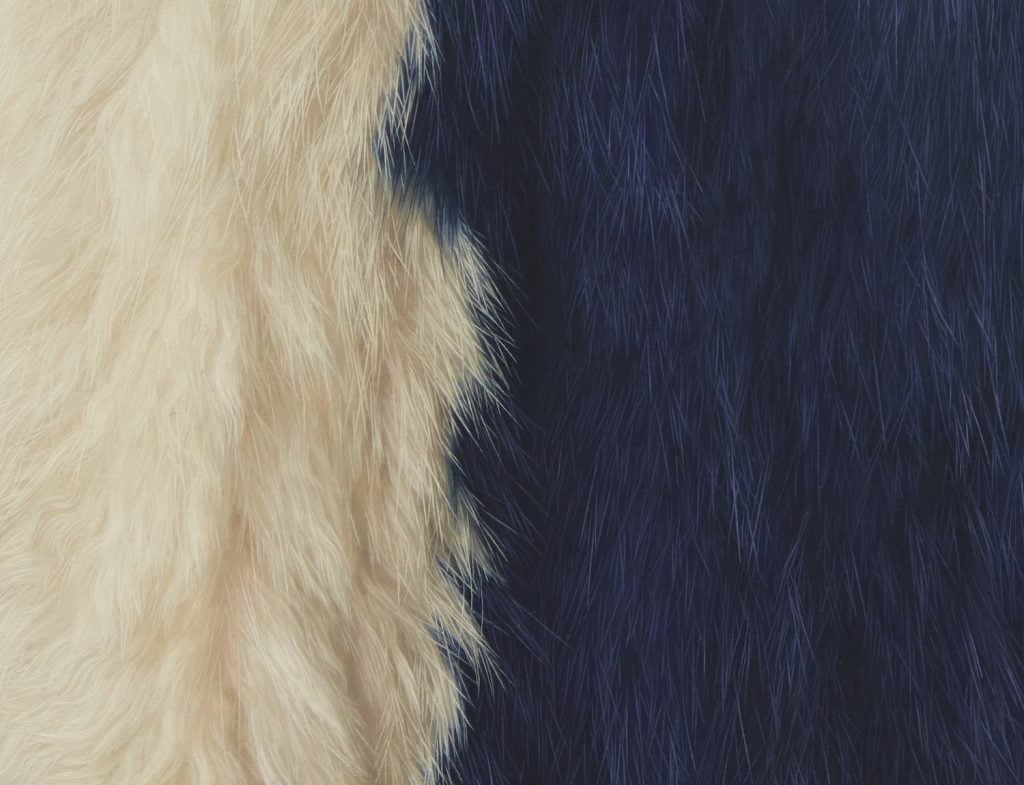
A detail from the untitled 2017 work above. Photo: Paul Salveson, courtesy François Ghebaly.
One thing you’ve acknowledged before is that the paintings are, on the one hand, very inviting, but on the other hand very cold and aloof. How do you manage to maintain a balance and avoid doing too much of one and not enough of the other?
Honestly, it’s not completely in my control. I plan things and I make decisions. But ultimately, it comes down to touch. The painting’s seductiveness had to do with the subjects I choose. And the sense of cool detachment is partly conveyed by the way the objects are represented, by the compositional choices I make, by the light—very formal things.
I think I saw pretty early on that the objects I was representing were already so sensual, and so loaded with meanings by their associations with the body and femininity, that I wanted to counterbalance that with a kind of coolness and objectivity. That was a conscious choice. But ultimately, that combination of seductiveness and detachment has to do with painterly touch. All painters have their touch. That’s what my touch conveys, in a sense.
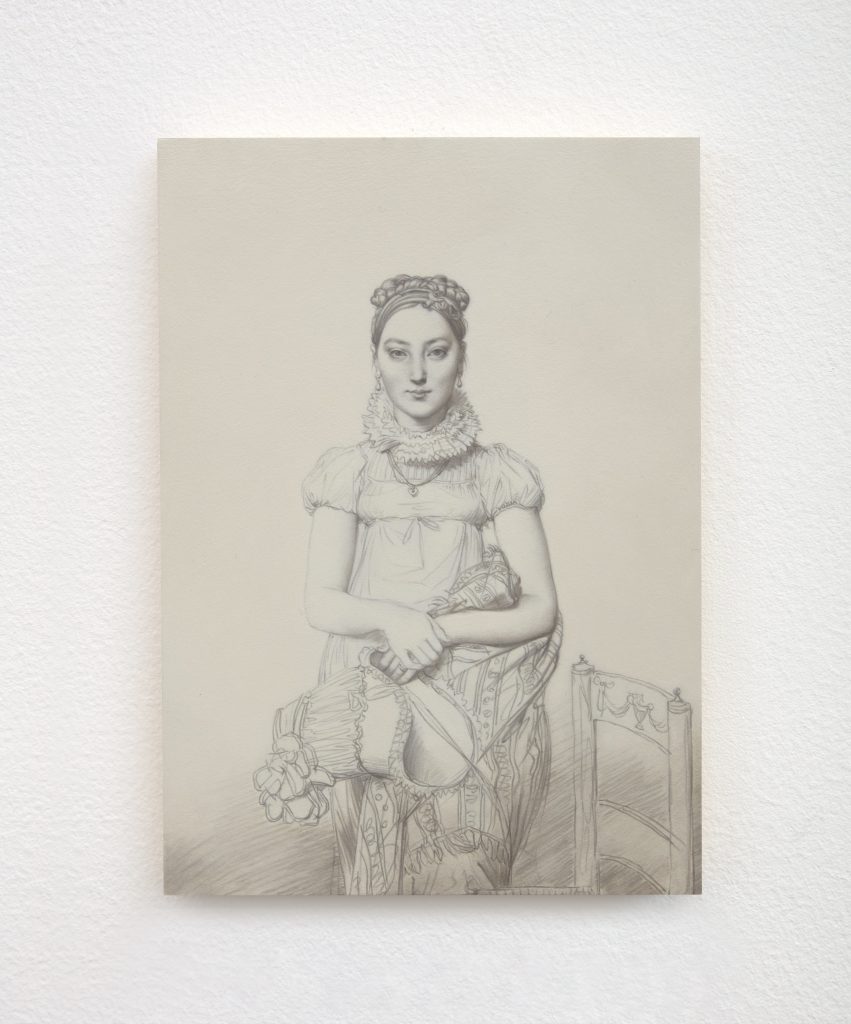
This 2007 work from Gitman’s “A Beauty” series is a finely rendered oil reproduction of a Jean-Auguste-Dominique Ingres drawing from 1815. Ingres’s original picture is 11.25 by 8.25 inches; Gitman’s work is even more truncated, at 7 by 5 inches. Photo: Paul Salveson, courtesy François Ghebaly.
But you also very consciously—because of the handbags you choose to depict, or the women you’ve painted, as with the works that reproduce Ingres pictures—bring the world into your work. You’ve talked before about implicit gendering in painting and how that’s impossible to avoid.
Yes, that’s kind of the basic thing my paintings do. Because I’m representing subjects that have to do with the body and with femininity, I’m drawing attention to implicit gendering.
Do you find that part of your work generally harder to talk about?
No. To me it’s really obvious, especially if you look at 20 years of work. They’re all related to femininity and representations of women. But on an even more basic level, I think the works have to do with the kind of desire that paintings generate, a kind of tactile/optic blend of seduction and attraction. To me, the works are about that. It’s very hard to separate that from a gendered way of seeing. But that’s not something I set out to explore when I started. I’m very analytical. I look at what I’ve done and I recognize it and I may want to pursue it further. But even at this point, when I choose what I’m going to paint, I’m not thinking about what it’s going to say.
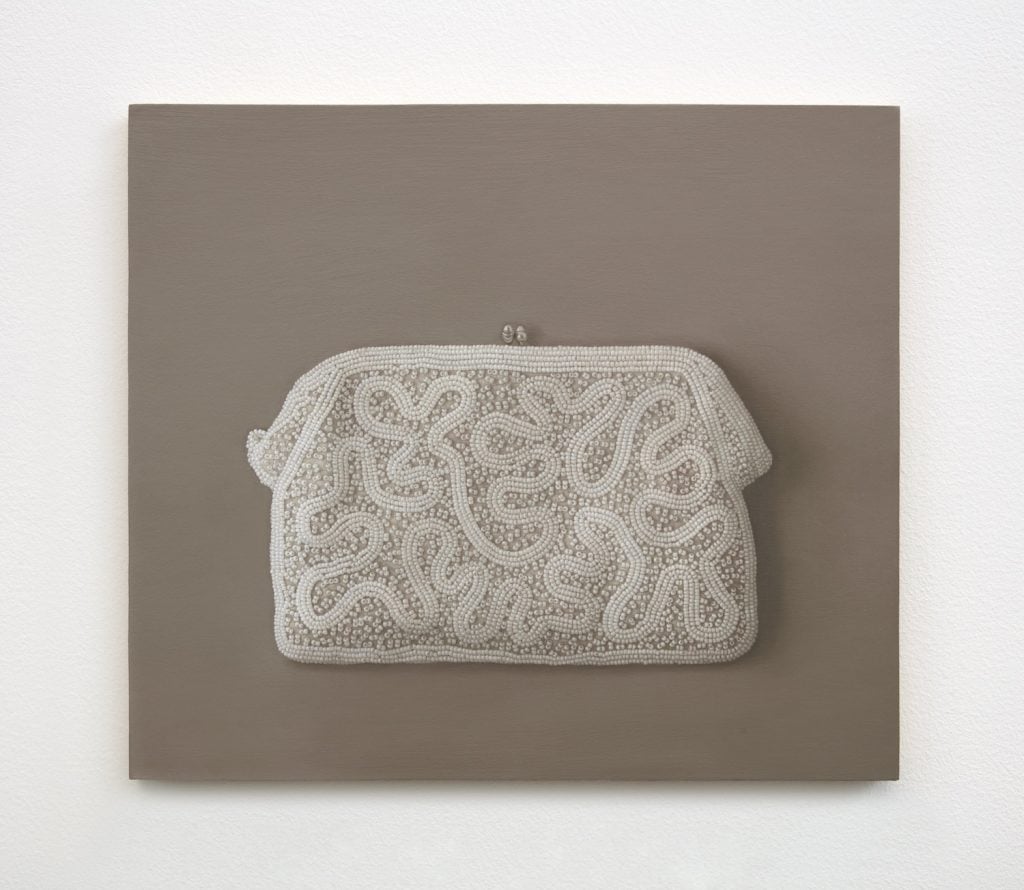
A 2004 work from Gitman’s “On Display” series. Photo: Paul Salveson, courtesy François Ghebaly.
Would you call yourself a formalist?
In some sense I am. I don’t want to say that once I choose the object, the work is predetermined, because I have many other choices to make. It makes a difference whether the ground is cropped this way or that way. But when I’m looking at a subject, I’m looking at it in formal terms. It’s almost like a readymade abstraction. Usually, I work a couple years on each series. That lets me fully explore the possibilities of an idea, so that within the parameters of the series, each painting does something different. It also means some of my basic decisions are predetermined. So generally, the question of subject matter is resolved. But the possibilities can be surprising. I’m now painting cropped fragments of vintage sequins jackets, dresses, tops, and from work to work, a direction emerges that leads me to something else.
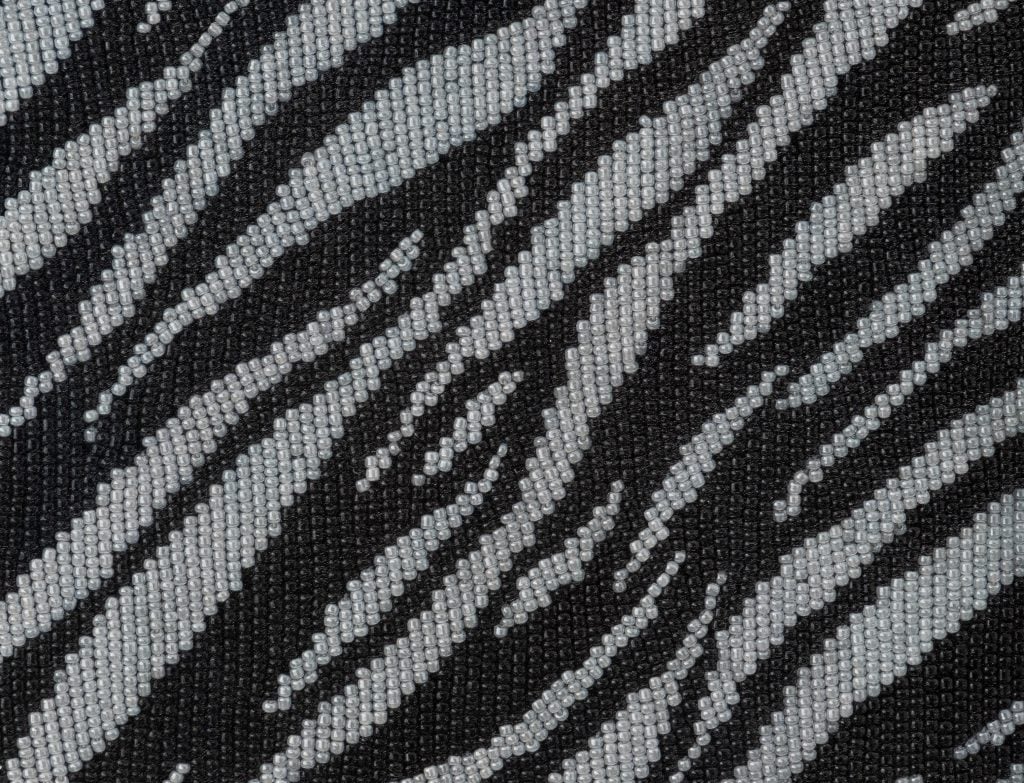
Gitman is a meticulous painter, working slowly for several months on almost every work she mades. The above image is a detail from another picture, made in 2010, from the “On Display” series. Photo: Paul Salveson, courtesy François Ghebaly.
To be clear, I didn’t mean formalist with any negative connotations. I think the word describes something specific, and your work seems to come from that tradition.
Daniel Weinberg, who used to represent me in L.A., told me that a lot of collectors he worked with over the years who only collected Minimalism or geometric abstraction would buy my work and it would be the first time they strayed from their formalist collection. And some people who are more inclined to figurative work or narrative work are very turned off by my painting.

This untitled work from 2016 was part of Gitman’s most recent New York solo show at Garth Greenan gallery in 2018. Photo: Paul Salveson, courtesy François Ghebaly.
Another thing you’ve acknowledged before is that there’s an absurd quality to your exercises of painstakingly painting furs and beads. It’s quite meticulous. How do you stay sane?
I do acknowledge that it’s ridiculous. That’s partly what makes it so interesting. But this very focused, daily painting routine is what keeps me sane. It requires a certain kind of temperament and patience. It’s not mechanical. It’s not a repetitive process. I paint from life. I’m looking at the actual object very closely and very carefully. I’m focusing my attention on each individual bead or sequin or strand of fur. I’m actually painting a particular sequin, the way it tilts or recedes, the way it catches the light. The same is true of the fur. I don’t generalize. This requires a very intense focus.
You suggested earlier that your paintings conflate erotic and pictorial desire, which is a very specific combination. Are there other conflations you see at work?
I love this question because it recognizes that my work hinges on the conflation of a number of things. We can talk about the conflation of the visual and the tactile; of image and object; of the represented surface versus the surface of the painting. But it’s more than just a conflation. It’s a kind of confusion that hopefully destabilizes some ways of seeing. The evocation of tactility in my work is heightened to such an extreme extent that sight and touch are indistinguishable. I like the word confusion to describe that because things get fused—fused and confused. The experience of my work has so much to do with these different combinations and confusions. I think that’s what gives the paintings their power.
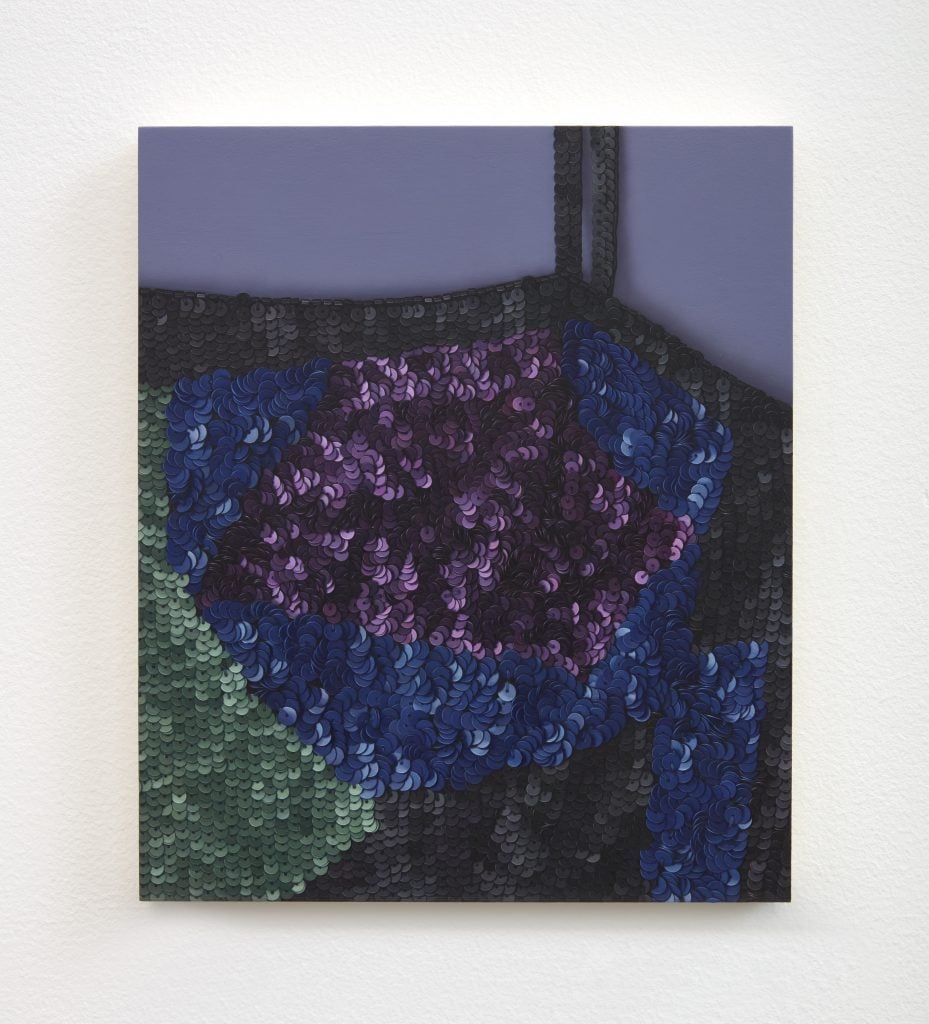
This untitled 2021 work is part of Gitman’s latest series, which focuses on sequins. Photo: Paul Salveson, courtesy François Ghebaly.
Victoria Gitman’s show, “Everything is Surface: Twenty Years of Painting,” is on view at François Ghebaly, Los Angeles, through May 7.